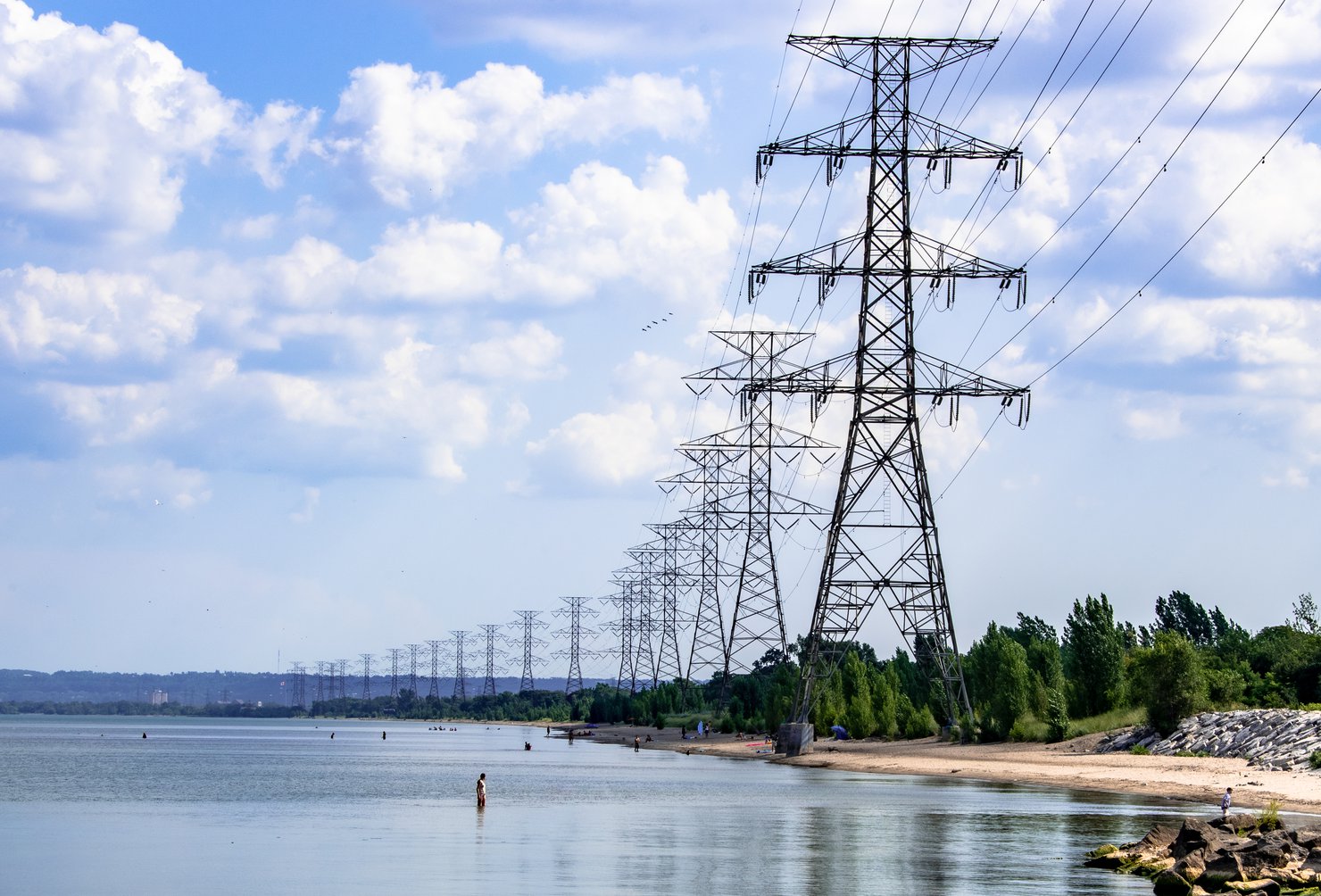How can we build an electricity market and policy structure that enables 100 percent clean, reliable, and affordable power around the clock? What are the biggest challenges to implementation? Moving forward, Resources for the Future will explore the opportunities and implications of total decarbonization of the power sector.
Addressing global climate change will require widespread decarbonization of the power sector and electrification of the economy. Policymakers, regulators, citizen groups, the corporate community, and other stakeholders face the challenges of an evolving set of technologies; growing demand from electrification of other sectors; and a complex market influenced by a mix of federal, state, and regional policies. Evaluating market designs and federal, state, and local policies can help facilitate the transition to a decarbonized power sector that serves a broad range of energy needs.
The Electric Power Program at Resources for the Future (RFF) brings economic insights to bear on the design, functioning, and evolution of electricity markets and a broad span of related government policies to help policymakers and stakeholders address emerging challenges. The program focuses on two major questions facing the sector: how to rapidly and feasibly decarbonize a growing power sector to meet climate goals, and how to maintain system reliability and affordability while doing so.
Decarbonizing the Power Sector
Many states are pursuing ambitious decarbonization goals for the power sector, and the Biden administration has embraced the decarbonization of the power grid by adopting goals of 80 percent clean power by 2030 and 100 percent clean power by 2035. The recent passage of the Inflation Reduction Act offers a new commitment from the US Congress to bolster clean energy development in the United States. In both state and federal settings, policymakers are looking for decarbonization policies that efficiently keep electricity prices low and encourage electrification, while meeting other objectives and political constraints. Congress also has approved the funding of research and development for advanced technologies, which could contribute to these efforts.

The successful design of decarbonization policies and strategies requires rigorous analysis to understand their effects on investment, the power generation mix, electricity affordability, and emissions of carbon dioxide and other pollutants. RFF researchers already have employed computational models and empirical approaches to inform the development of federal, state, and regional policies, including proposals for pricing carbon and clean energy standards, tax credits for clean energy technologies, and potential means of regulating greenhouse gas emissions under the Clean Air Act. We will continue to use our models to inform climate policies and clean energy policies that are directed at the electricity sector, along with policies that aim to increase the electrification of other end uses.
Maintaining Reliability and Affordability in the Power Sector
Energy regulators are seeking to reform market rules, regulations, and planning processes to facilitate clean energy investments, updates to infrastructure, and greater grid flexibility. Improved electric rate design, expansion of wholesale markets, and opportunities to shift demand all are being explored to ensure system reliability and affordability. These ideas call for research and analysis to help guide decisionmakers toward effective, efficient, and equitable solutions. RFF researchers will continue to track and inform the evolution of regulatory policies and market rules that will shape this continuing evolution of the power sector.
RFF’s Electric Power Program will address these challenges in the electricity industry in the near term, while keeping an eye on the long game. Here’s how.
We will focus on decarbonizing the power sector.
We’ll support federal and state policy discussions surrounding the issue of decarbonization. At the federal level, our modeling evaluates the consequences of various climate policy options on carbon emissions—such as regulations from the US Environmental Protection Agency on existing coal plants under the Clean Air Act—and their implications for local air quality. We’ll also investigate the impacts of different policies in light of the recent passage of the Inflation Reduction Act.
At the state level, legislators and governors are adopting ambitious clean energy goals and policies. For example, some have implemented clean energy standards, and a group of mid-Atlantic states have joined the Regional Greenhouse Gas Initiative that was launched in the Northeast over 10 years ago. RFF researchers recently completed work with the state of Virginia to analyze policy options for deep decarbonization of electricity and will continue to explore additional hurdles that states face in their efforts to decarbonize their electricity supply.
We will explore how to design the market structures and regulations that are needed for an affordable, reliable, and clean energy transition.
We will continue to explore how different electricity market structures and regulatory policies impact decarbonization, the speed of the energy transition, and electricity bills. One major challenge has been building transmission lines that integrate regional networks, which can reduce electricity costs and enable greater access to renewable resources. Our work informs ongoing discussions related to the advancement of federal-state cooperation on transmission planning and development, efforts spearheaded by the Federal Energy Regulatory Commission and the National Association of Regulatory Utility Commissioners.

Market design also is important for enabling and guiding the investments needed for an affordable, reliable, deeply decarbonized electric grid which serves loads that could grow rapidly in the decades ahead. RFF scholars will continue tracking market rule changes with near-term impacts and weigh in with analysis and advice. We will explore how emerging regional markets can evolve to limit emissions leakage from state carbon pricing policies. We’ll also continue exploring how wholesale market designs might need to change to help ensure a reliable and affordable supply of electricity in the future.
We will share insights that facilitate effective and efficient electrification.
Our work examines the policies and pricing structures that can encourage electrification, along with the welfare benefits; consequences for emissions levels; and costs of different approaches that utilities, device manufacturers, or state regulators could pursue. We’ll work to understand how changes to electricity retail rate design could encourage electrification and how electricity prices have influenced electrification to date. We’ll also explore how policies that aim to encourage electric vehicle adoption in the long term may affect electricity-sector emissions and air pollution, and we’ll study the impacts of electric vehicle policies on electricity load and emissions.
We’re developing new simulation models that will examine the economics of electrifying certain energy services and various ways to optimize their operation. We’ll also use empirical approaches and big data to understand how consumers respond to time-varying electricity rates and how automation can facilitate those responses.
We will expand our exploration of the distributional impacts of policies in the power sector.
As a part of our research on electric power, we plan to expand our understanding of how the benefits and costs of policies and behaviors related to climate, the electricity market, and electricity pricing are distributed among communities. We will continue to consider how different policies affect electricity rates and affordability for the most vulnerable households.
We also will evaluate how climate policies affect the health of environmental justice communities. We may expand on our work in New York State by investigating how different climate policies, prompted by the passing of the Climate Leadership and Community Protection Act, will affect carbon dioxide emissions, local air pollution, and community health outcomes at the local level.

Our planned work to develop our models will further support the evaluation of environmental justice outcomes by allowing us to determine the economic and pollution impacts of energy facility siting decisions. This work will enable us to evaluate policies that are designed to protect communities that have been historically exposed to pollution. For example, a New Jersey law that requires new electricity generators to prove they will not negatively impact historically burdened communities opens the door to modeling work that could be undertaken to determine where new generators could be built that would be in compliance with the law.
Collaboration with Other RFF Programs and Initiatives
In addition to pursuing the core goals of the Electric Power Program, RFF researchers will seek opportunities to collaborate across program areas to help inform broader societal decarbonization efforts, climate change resilience, and adaptation. Electrification will play a large role in climate resilience and adaptation as temperatures rise across the globe. Understanding the climate vulnerability of electric-power infrastructure and ensuring its climate resilience will be important to maintaining service reliability in light of growing demand. Siting of new generators, and the employment opportunities they bring, will have implications for energy communities in transition. Electricity markets and rate design have meaningful implications for the decarbonization of the transportation sector. These are just a few examples of the complex research topics that span various programs and expertise housed at RFF. Understanding what it takes to bring about a zero-carbon future will require thoughtful consideration of how all these spaces interact and build on one another.







